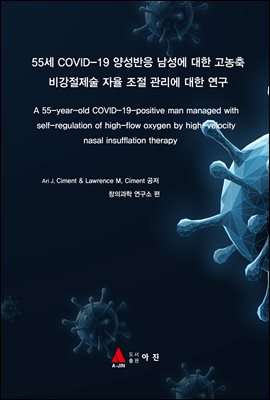
55세 COVID-19 양성반응 남성에 대한 고농축 비강절제술 자율 조절 관리에 대한 연구
- 저자Ari J. Ciment & Lawrence M. Ciment 저
- 출판사아진
- 출판일2020-07-12
- 등록일2020-12-21
- SNS공유


- 파일포맷PDF
- 파일크기9MB
- 공급사YES24
-
지원기기
PC
PHONE
TABLET
프로그램 수동설치
전자책 프로그램 수동설치 안내
아이폰, 아이패드, 안드로이드폰, 태블릿,
보유 1, 대출 0,
예약 0, 누적대출 7, 누적예약 0
책소개
Management of critically ill coronavirus disease 2019 (COVID-19) patients remainsboth risky and technically challenging. A 55-year-old male COVID-19-positive
patient with obstructive sleep apnoea (OSA), diabetes, and obesity presented with
cough and shortness of breath, escalating to requiring high-flow oxygen therapy
by high-velocity nasal insufflation. The patient’s flow rate and oxygen fraction
remained labile throughout much of the hospitalization. This lability required
frequent clinician interactions and use of personal protective equipment. The
patient was alert and oriented and was instructed on the operation of the
high-flow system, specifically the adjustment of both flow rate and oxygen
percentage. The patient was instructed to modify oxygen to maintain an SpO₂
(peripheral capillary oxygen saturation) target range, and flow rate to address
dyspnoea as well as reduction of flow as tolerated when other staff entered the
room. The patient was successfully self-regulated for 10 days and was discharged
on 2 L/min nasal cannula on day 14 of his illness.
목차
제 1편 코로나바이러스 정의1. 코로나바이러스감염증-19(Covid-19) 정보 7
2. 코로나바이러스 분류 및 특성 9
3. 코로나 바이러스 전자현미경 형태 11
4. 코로나바이러스 구조 (Covid-19 Organization) 13
5. 코로나19: 환경에 지속적인 영향을 미칠까? 19
6. 치료법(Therapeutical Method) 22
제 2편 연구논문
A 55-year-old COVID-19-positive man managed with self-regulation
of high-flow oxygen by high-velocity nasal insufflation therapy
1. Abstract 23
2. Introduction 23
3. Case Report 23
4. Discussion 24
5. References 25

















